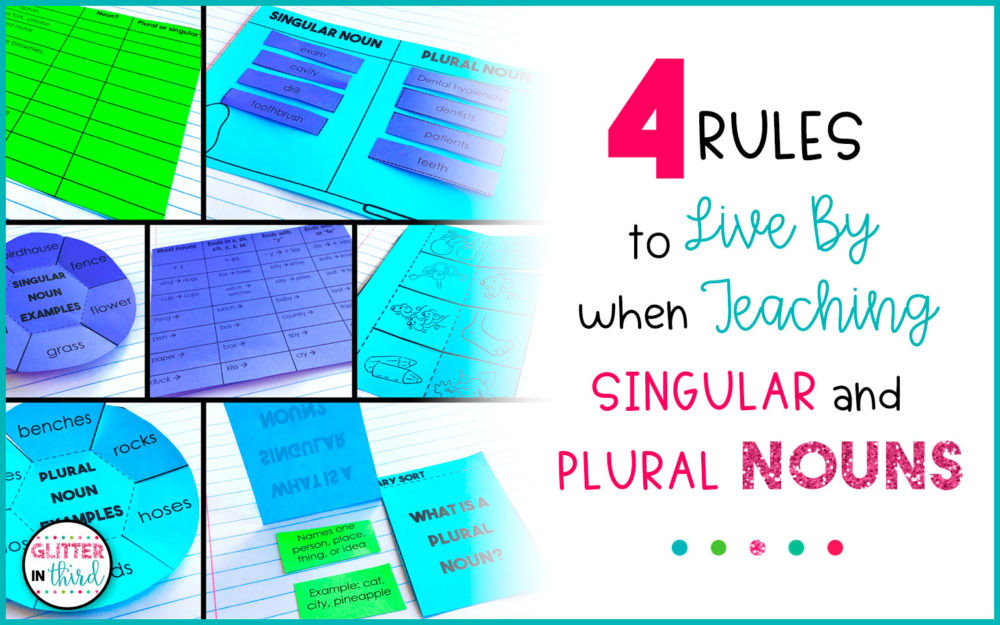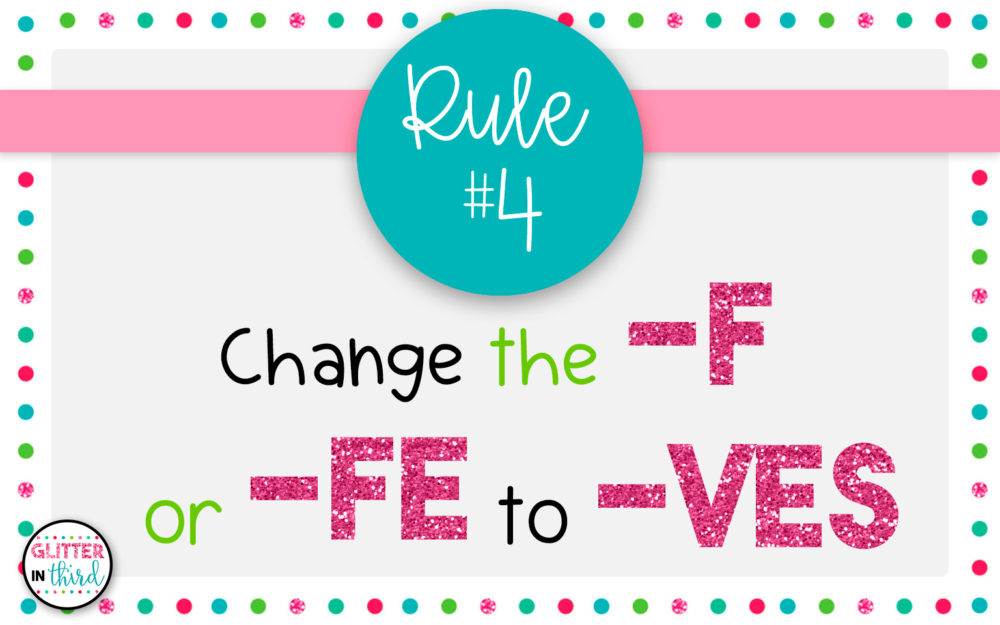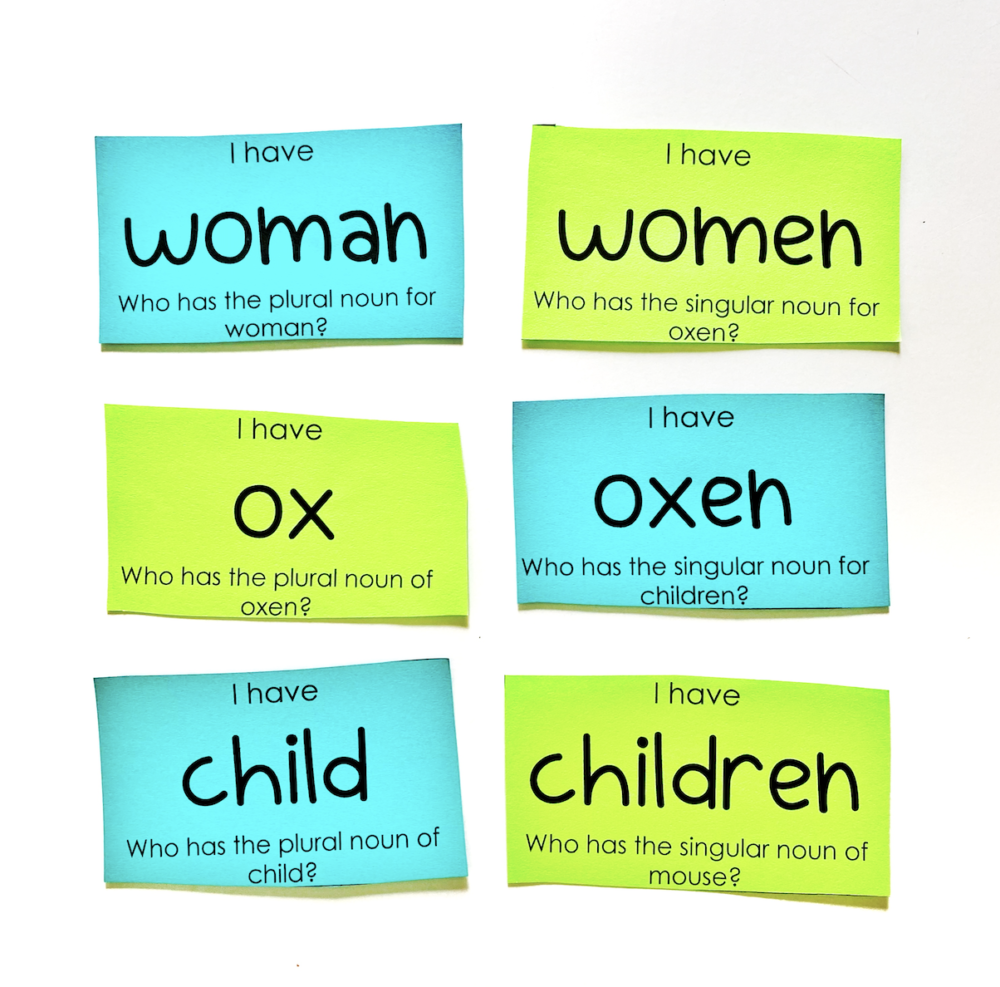Join the VIP Teacher Club!

Looking for singular and plural nouns activities?
Teaching singular and plural nouns is TOUGH.
Maybe that’s just me being dramatic. 😉
But seriously, it seems as though there are so many rules and “one-offs” related to singular and plural nouns.
When teaching these rules to live by, I like to keep things as simple and streamlined as possible, so I’d love to share with you the rules and resources that will help you teach singular and plural nouns, as well as a small list of irregular verbs that just tend to do whatever they want! 😉
By the way – if you’re looking for more fun grammar ideas – make sure to check out my blog post on how to make grammar fun.

I wish this were just true for ALL nouns… but it’s definitely not. 🙂
For most nouns, all you have to do is add -s to the end of the word – cup to cups, block to blocks, car to cars – this is definitely the most commonly used rule, and the easiest rule for students to remember.
One digital resource I’d love to share that actually focuses on all the singular and plural noun rules we’ll talk about is this collection of Google Classroom activities.

You’ll find questions related to singular and plural noun definitions, practice on identifying nouns in given sentences and if they’re plural or singular, a singular and plural noun rules chart, as well as practice sorting nouns to either singular or plural categories.
The rules chart and sorting activities both come with editable versions, making them reusable again and again!
You can check out this entire Google Classroom resource here!


Our rules get a little trickier as we go!
For nouns ending in -s, -sh, -ch, -x, -z, and -ss you need to add -es to the end to make it plural – class to classes, dish to dishes, fizz to fizzes – this rule can typically be remembered by students after a little memorization. 🙂

Another hands-on resource that will help teach all 4 of the singular and plural noun rules is this interactive notebook!
It’s loaded with multiple examples of singular and plural nouns, sorting activities with definitions and nouns, and another rules chart.
Your students will also enjoy a flipbook activity that’s included with multiple pictures to work on identifying singular and plural nouns, or making singular ones plural.
As always, this interactive notebook comes with 3 levels of differentiation to be completed by any and all student abilities.
You can see the activities in more detail by clicking here!

Baby to babies, hobby to hobbies, family to families – this is a rule that students typically need to be reminded about.
They’ll have the tendency to just stick an -s on the end!
One thing to keep in mind while teaching your noun rules is consonant –y vs. vowel -y. Consider this a sub-rule to rule #3! 😉
When a word ends in a consonant -y, it follows the -ies rule, but when it ends in vowel -y, just add s.
For example, boy to boys, key to keys, or day to days.

My last digital resource I have to share with you is a set of 6 singular and plural noun mystery pixels.
On each digital mystery pixel, your students will be given multiple singular nouns and will then need to create the plural form of each noun.
As they answer the questions correctly, a mystery picture will appear!
The 6 digital mystery pictures included are a parrot, bald eagle, dolphin, squirrel, koala, and otter. 🙂
Each pixel focuses on a specific singular and plural noun rule. For example, the otter pixel would be a great practice opportunity for rule #3… -y to -ies!
If you’d like to see what other rules correlate with each pixel, you can find them all here!

Not familiar with digital mystery pixels?
Make sure to enter your info below to get one sent immediately to your inbox! You can also read all about them here.

Words like calf to calves, life to lives, knife to knives.
These words aren’t quite as common as some of our other words, but still important to know as they come up!
I have to give irregular nouns their own category because they don’t follow the rules at all!
Point blank, these are tough, and the only way to really get your students to remember them is by repetition and continuous exposure.
I highly recommend creating an anchor chart specifically for commonly used irregular nouns and creating a separate anchor chart for the other 4 rules. 🙂
Here are a few irregular singular and plural noun pairs to get you started on your chart:
| tooth | teeth |
| foot | feet |
| fish | fish |
| deer | deer |
| ox | oxen |
| goose | geese |
| man | men |
| woman | women |
| sheep | sheep |
| tuna | tuna |
| die | dice |
| person | people |
| child | children |
| shrimp | shrimp |
| mouse | mice |
Irregular nouns can be frustrating for your students to remember, so remember to be encouraging while practicing these.
There’s NO rhyme or reason for them, so the more you can expose your kids to them, the better!

In addition to having anchor charts always available, I also love a good “I Have… Who Has?” game!
You can take these 15 pairs of irregular nouns I just listed and create your own “I Have… Who Has?” game.
It’s a simple whole-class or small group activity that’s quick and easy to make, and is also great for listening skills.

Lastly, incorporate as much literature as you can during your singular and plural noun unit.
This will definitely help with exposure.
You can take any picture book and go on a “noun search.”
Have your students list all the nouns they find in their story, and then have them create the plural form of each.
Crazy simple, little to no prep on your part, and it gives them parts of speech practice while working on singular and plural nouns, too. 🙂
I know there are even more singular and plural noun rules out there that fall into those “one-off” categories, but this set of 4, along with irregular verbs and each resource, will give your students a great foundation to begin!
Keep it light, keep it simple, and keep it fun.
Your students will catch on in no time!

Are you new to color-by-numbers?
Make sure to download my Reading Passage & Question Color-By-Number FREEBIE!
It’s super fun for students (and doesn’t take an entire class period to complete, like some reading comprehension passages!)
It’s no-prep, fun, and super easy to grade (just peek at the picture!)
Sign up below to get this color-by-number freebie sent directly to your inbox!


Hey there, I’m Kelly! I I love helping teachers save time with technology and resources so they have more hours in the day to spend with family and friends. Take a look around to find new ideas that you can implement in your classroom today!